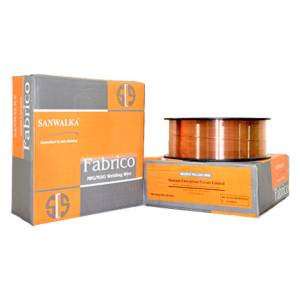Description
GMAW (MIG/MAG) Welding: High-Speed, Versatile Welding for Diverse Applications
GMAW, or Gas Metal Arc Welding, also known as MIG (Metal Inert Gas) or MAG (Metal Active Gas) welding, is a widely used arc welding process prized for its speed, versatility, and relatively high quality welds. This process utilizes a continuous consumable wire electrode fed into the weld pool, shielded by a flowing gas. The choice of shielding gas dictates whether it's classified as MIG or MAG.
Key Features and Benefits:
- High Deposition Rates: GMAW boasts significantly faster welding speeds compared to other arc welding processes like SMAW (stick welding), resulting in increased productivity and reduced labor costs.
- Versatile Applications: Suitable for a wide range of materials including steel (mild, stainless, high-strength low-alloy), aluminum, and other non-ferrous metals. It can be used for thin sheet metal to thick plates, making it extremely adaptable.
- Superior Weld Quality: With proper technique and parameters, GMAW produces clean, strong, and aesthetically pleasing welds with minimal spatter. The consistent wire feed ensures uniform heat input.
- Improved Control: Precise control over weld parameters like voltage, amperage, and wire feed speed allows for adjustments based on material thickness and joint design, enabling highly tailored welds.
- Relatively Easy to Learn: While mastery requires skill and practice, the process is generally considered easier to learn than some other welding techniques, leading to faster operator training and deployment.
- Automation Capabilities: GMAW lends itself well to automation, suitable for robotic welding systems in high-volume production environments. This allows for consistent weld quality and increased efficiency.
- Portability: Many GMAW power sources are relatively portable, making them suitable for both shop and field applications.
MIG vs. MAG:
The primary distinction lies in the shielding gas used:
- MIG (Metal Inert Gas): Employs inert gases like Argon or Helium, which do not react chemically with the molten weld metal. This is commonly used for aluminum and other reactive metals where oxidation is a major concern.
- MAG (Metal Active Gas): Utilizes active gases such as Carbon Dioxide (CO2) or mixtures of CO2 with Argon or Oxygen. These gases react with the molten metal, enhancing penetration and increasing the weld's strength, often used for steel welding.
Applications:
GMAW finds applications across diverse industries, including:
- Automotive Manufacturing: Body panels, chassis components, and other structural elements.
- Construction: Structural steel fabrication, piping, and other metalwork.
- Aerospace: Welding lightweight alloys and high-strength materials.
- Manufacturing: Fabrication of various metal components and products.
- Shipbuilding: Joining of steel plates and other marine structures.
Choosing the Right GMAW System:
Selecting the appropriate GMAW system depends on factors such as:
- Materials to be welded: Different materials require different wire types and shielding gases.
- Weld joint design: The type of joint affects the welding parameters.
- Production volume: High-volume production may necessitate automated systems.
- Budget: GMAW systems range in price and complexity.
GMAW is a versatile and highly efficient welding process offering significant advantages across a wide array of applications. Its speed, quality, and adaptability make it a cornerstone of modern metal fabrication.
